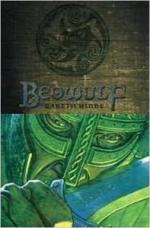PREFACE.
The present work is a modest effort to reproduce approximately, in modern measures, the venerable epic, Beowulf. Approximately, I repeat; for a very close reproduction of Anglo-Saxon verse would, to a large extent, be prose to a modern ear.
The Heyne-Socin text and glossary have been closely followed. Occasionally a deviation has been made, but always for what seemed good and sufficient reason. The translator does not aim to be an editor. Once in a while, however, he has added a conjecture of his own to the emendations quoted from the criticisms of other students of the poem.
This work is addressed to two classes of readers. From both of these alike the translator begs sympathy and co-operation. The Anglo-Saxon scholar he hopes to please by adhering faithfully to the original. The student of English literature he aims to interest by giving him, in modern garb, the most ancient epic of our race. This is a bold and venturesome undertaking; and yet there must be some students of the Teutonic past willing to follow even a daring guide, if they may read in modern phrases of the sorrows of Hrothgar, of the prowess of Beowulf, and of the feelings that stirred the hearts of our forefathers in their primeval homes.
In order to please the larger class of readers, a regular cadence has been used, a measure which, while retaining the essential characteristics of the original, permits the reader to see ahead of him in reading.
Perhaps every Anglo-Saxon scholar has his own theory as to how Beowulf should be translated. Some have given us prose versions of what we believe to be a great poem. Is it any reflection on our honored Kemble and Arnold to say that their translations fail to show a layman that Beowulf is justly called our first epic? Of those translators who have used verse, several have written from what would seem a mistaken point of view. Is it proper, for instance, that the grave and solemn speeches of Beowulf and Hrothgar be put in ballad measures, tripping lightly and airily along? Or, again, is it fitting that the rough martial music of Anglo-Saxon verse be interpreted to us in the smooth measures of modern blank verse? Do we hear what has been beautifully called “the clanging tread of a warrior in mail”?
[viii]
Of all English translations of Beowulf, that of Professor Garnett alone gives any adequate idea of the chief characteristics of this great Teutonic epic.
The measure used in the present translation is believed to be as near a reproduction of the original as modern English affords. The cadences closely resemble those used by Browning in some of his most striking poems. The four stresses of the Anglo-Saxon verse are retained, and as much thesis and anacrusis is allowed as is consistent with a regular cadence. Alliteration has been used to a large extent; but it was thought that modern ears would hardly tolerate it on every line. End-rhyme has been used occasionally; internal rhyme, sporadically. Both have some warrant in Anglo-Saxon poetry. (For end-rhyme, see 1_53, 1_54; for internal rhyme, 2_21, 6_40.)




